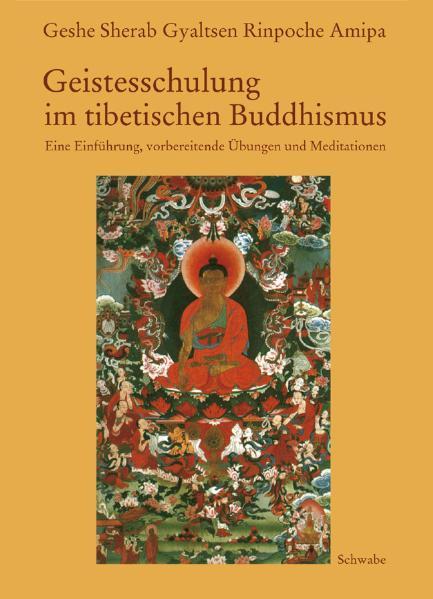
Amipa, Geshe: Mind training in Tibetan Buddhism
An introduction, preparatory exercises and meditations.
Why is there so much suffering in life? Why does Buddhism speak of suffering rebirths? Is it possible to free oneself from this cycle? There are ways that can lead to a life filled with love, peace and harmony. This book on 'Training the Mind in Tibetan Buddhism' is based on the fundamental insights of the Buddha and the millennia-old tradition of Buddhism. Geshe Sherab Gyaltsen Rinpoche Amipa shows in a simple and understandable way the paths that free us from the strict attachment to our own ego and lead us to the highest insights into life. He bases this on the ancient philosophical source texts and his own deep experience of meditation and life. The beginner is first given the foundation for all spiritual development, the reflection on his own 'precious body' and on the 'causes and effects' on which his life, his happiness and his suffering depend. The more advanced are then taught 'exercises for training the mind', which can lead via concentration and mental stillness to higher, all-pervading wisdom and to a fully awakened mind that is determined to reach enlightenment through love and compassion (Bodhicitta). The individual explanations are followed by meditations that can be easily practiced by anyone interested. The third part offers methods that serve to penetrate selflessness and insight into the true nature of one's own mind, to the realization that all happiness and suffering in a person's life is created solely by his mind. Training the mind leads to liberation from suffering. The appendix contains the author's fascinating autobiography. Starting from his earliest childhood days and the cultural and religious life in ancient Tibet, he describes his spiritual development as a monk and scholar, his escape to India and his rich work in Europe.
Bracelets, bracelets, bracelets, bracelets, chains
| age | Wrist circumference |
|
Newborn |
9 - 12 cm |
|
6 months - 3 years |
12 - 14 cm |
|
4 - 10 years |
14 - 15 cm |
|
Teenager, ladies (XS) |
15 - 16 cm |
|
Ladies (M) |
16 - 17 cm |
|
Ladies (XL) |
18 - 19 cm |
|
Men (M) |
18 - 20 cm |
|
Men (XL) |
21 - 22 cm |
The length of the bracelet may be 1 cm to 3 cm longer than the measured wrist circumference, depending on your taste.
Finger rings
| Ring size | Inner diameter | Inner circumference |
|
48 |
15,3 mm |
48 mm |
|
50 |
15.9 mm |
50 mm |
|
52 |
16.6 mm |
52 mm |
|
54 |
17.2 mm |
54 mm |
|
56 |
17.8 mm |
56 mm |
|
58 |
18.5 mm |
58 mm |
|
60 |
19.1 mm |
60 mm |
|
62 |
19.7 mm |
62 mm |
|
64 |
20.4 mm |
64 mm |
|
66 |
21.0 mm |
66 mm |
- Take a ring that fits well.
- Place it on a ruler and measure the inner diameter (from one inner edge to the other).
- Compare the diameter with the table to determine the ring size.
- Take a thin strip of paper or thread.
- Wrap it around the part of the finger where you want the ring to sit (not too tight).
- Mark the point where the ends meet.
- Measure the length of the strip in millimeters. This is the inner circumference.
- Find the right size in the table.
- Measure the finger size in the evening, as fingers swell slightly during the day.
- If you are between two sizes, choose the larger size.
- Make sure that the ring fits over the knuckle.


